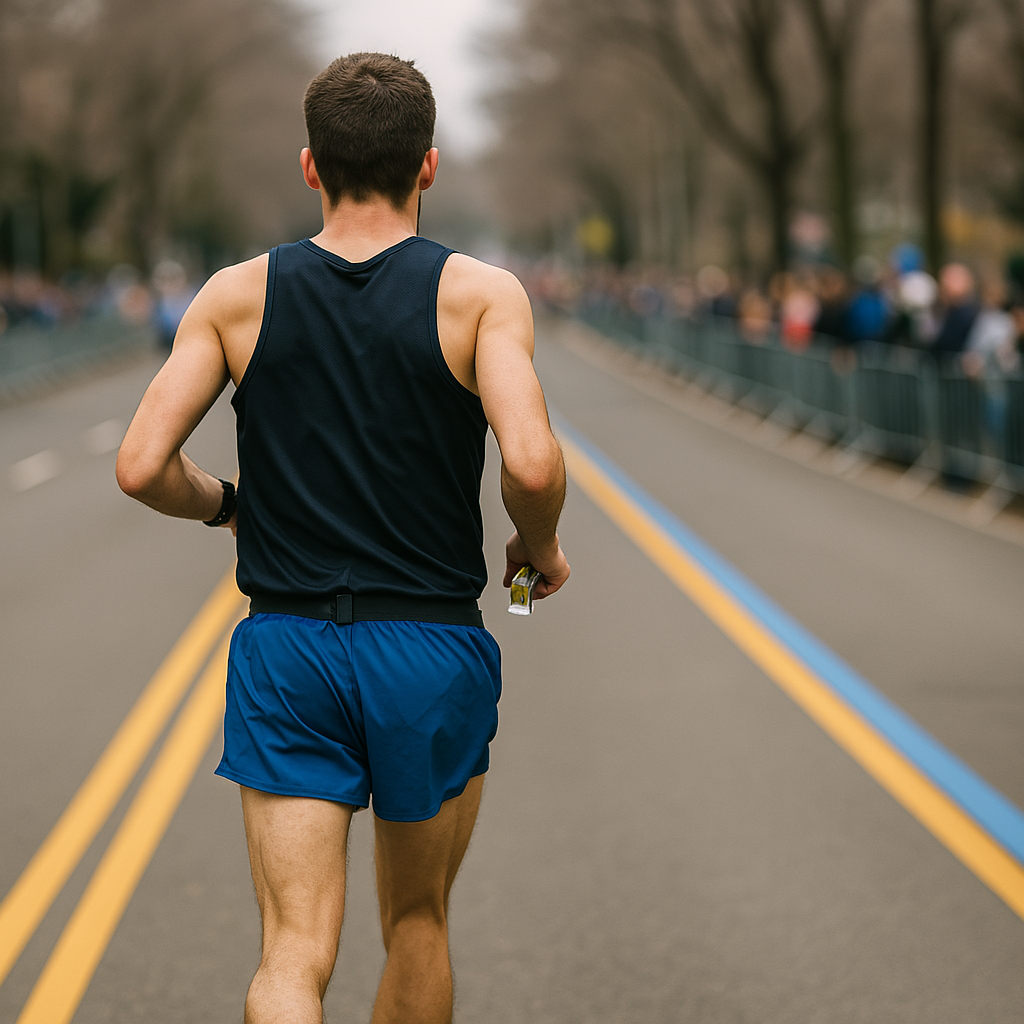Marathon fueling isn’t just about energy—it’s about discipline, preparation, and learning what your body needs when it’s pushing through 26.2 miles. After running more than 10 marathons—including five Boston Qualifiers and multiple sub-3s—here’s my take on how many gels you should take during a marathon.
Start With Science: How Many Calories Do You Need?
Sports nutrition research recommends 30–60 grams of carbohydrate per hour during endurance exercise lasting 2.5–3 hours, and up to 90g/hour for longer events if your gut is trained to handle it. That translates to:
-
1 to 1.1 grams of carbohydrate per kilogram of body weight per hour
For a 70 kg (154 lb) runner, that’s 70g of carbs/hour—about 280 calories.
Since most gels contain around 20–25g of carbohydrate (80–100 calories), you’d need 2 to 3 gels per hour to hit that target. For a marathon taking 3–4 hours, that’s roughly 6 to 9 gels total.
My Simple Strategy
Personally, I take one gel 10 minutes before the race, then one every 3 miles. For me, that’s about 7–8 gels across a marathon. It’s easy to remember and aligns almost perfectly with the recommended carbohydrate intake.
And yes—err on the side of more fuel than less. Bonking is far worse than a few extra calories.
Learn from My Mistake
One year, I relied too heavily on course gels—which were caffeinated. That turned into an urgent bathroom break by mile 18. Since then, I’ve carried my own and opted for low or no caffeine. Don’t let your Boston dream get sidelined by a porta-potty.
Hydration Is Non-Negotiable
Gels without water are like peanut butter without bread—thick, sticky, and tough to digest. Always take 1–2 cups of water with each gel. On hot or humid days, go for 2 cups and slow down if you need to. It’s better to lose 10 seconds at the aid station than 10 minutes from dehydration or cramping.
Carry Your Own Gels
I always carry my full gel plan. SPI belts, running shorts, tights—they all work. The course gels? Just a backup in case one falls. (Here’s how: How to Carry Running Gels).
What to Look for in a Gel
Pick a gel that:
-
Delivers 20–25g of simple carbs
-
Tastes good to you
-
Isn’t overloaded with caffeine (unless you’ve trained for it)
You don’t need protein, fat, or fiber here—just quick, simple energy.
Practice from Day One
Start practicing your fueling plan with your very first long run. Train your gut to handle calories just like you train your legs to handle miles.
Takeaway:
Take one gel 10 minutes before the race, then 2–3 per hour depending on your weight and pacing. Hydrate, carry your own, and practice it all in training. Fuel well, and you’ll be strong through mile 26—and fast through the final .2.


